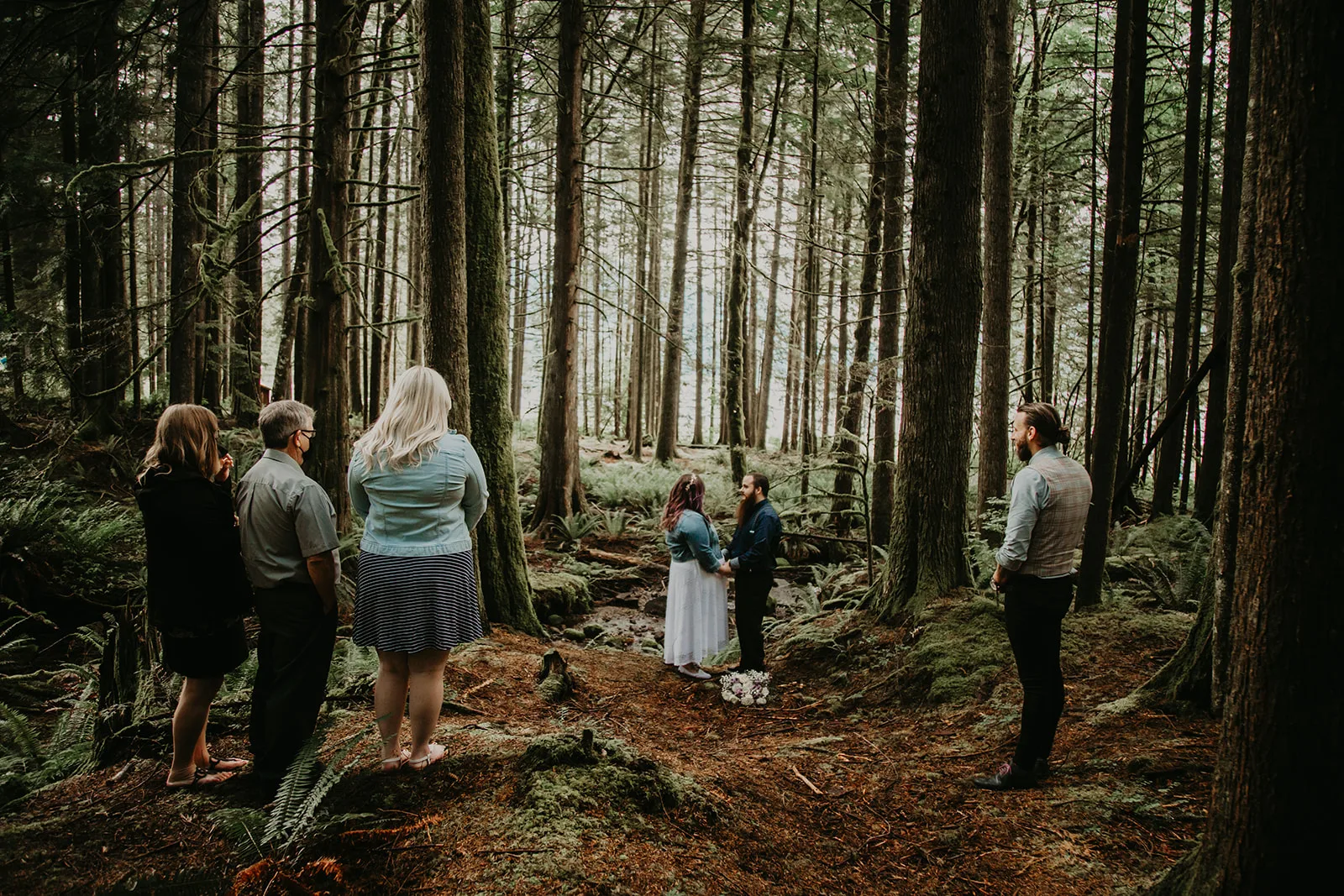As elopement officiants, we love that more and more couples are choosing intimate adventure weddings and outdoor elopements. There’s nothing better than marrying a couple in the middle of the forests of Stanley Park, by a glacial lake, or on the top of a mountain during a helicopter elopement.
And while we love showing off the most beautiful parts of our country, we also want to ensure those places stay beautiful for a very long time. That’s why we’re so passionate about following the principles of Leave No Trace and ensuring that every outdoor elopement is safe, sustainable and respectful.
What is Leave No Trace?
Leave No Trace is a concept focused on limiting our impact on the outdoors so the environment can be sustained for generations to come. As the name implies, there should be no trace of our outdoor activities once they’re completed.
The international organization behind Leave No Trace explains, “The organization accomplishes its mission by providing innovative education, skills, research and science to help people care for the outdoors. By working with the public and those managing public lands, Leave No Trace focuses on educating people—instead of costly restoration programs or access restrictions—as the most effective and least resource-intensive solution to land protection.”
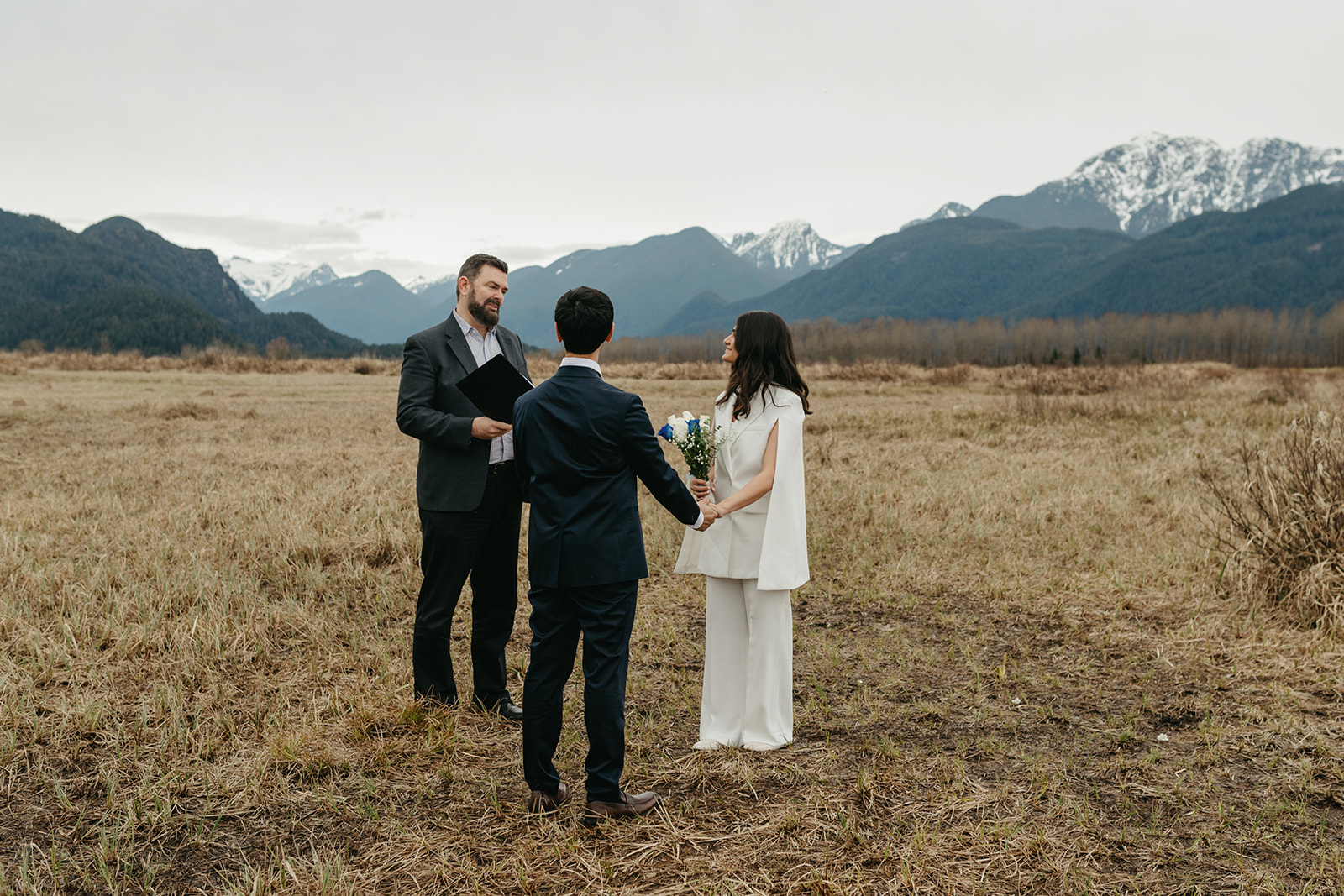
Applying Leave No Trace to your outdoor elopement
Leave No Trace provides seven core principles that anyone visiting the great outdoors can use as a framework to help lessen their impact. Below, we’re sharing how six of the seven principles could apply to your outdoor elopement. (Yes, we skipped one – only because we doubt your outdoor elopement will have a campfire!)
Plan ahead and prepare
This LNT principle is probably the most important one for couples planning an outdoor elopement. Planning ahead and preparing are going to be the key to keeping you and the environment safe.
First things first, know where you’re going and get specific. Instead of just deciding on a park, choose the actual trail and drop a Google Maps pin on the exact area where you want your elopement to take place.
Not familiar with the area? If you’re local, visit the location ahead of your elopement and scope it out. Or, if you’re not local, check out our Vancouver elopement locations and ask your wedding officiant for some advice. At the very least, agree on a specific spot where you’ll meet your officiant and photographer before heading in.
Do some research on your chosen area. Do you need a park pass or permit? Do you need to make a reservation? How busy does your chosen spot get during your elopement time? Will it be difficult to access? And don’t forget to take stock of your own abilities too: Will you be able to walk, hike or climb to your desired area safely? Keep in mind that you may be wearing your wedding outfit at the time!
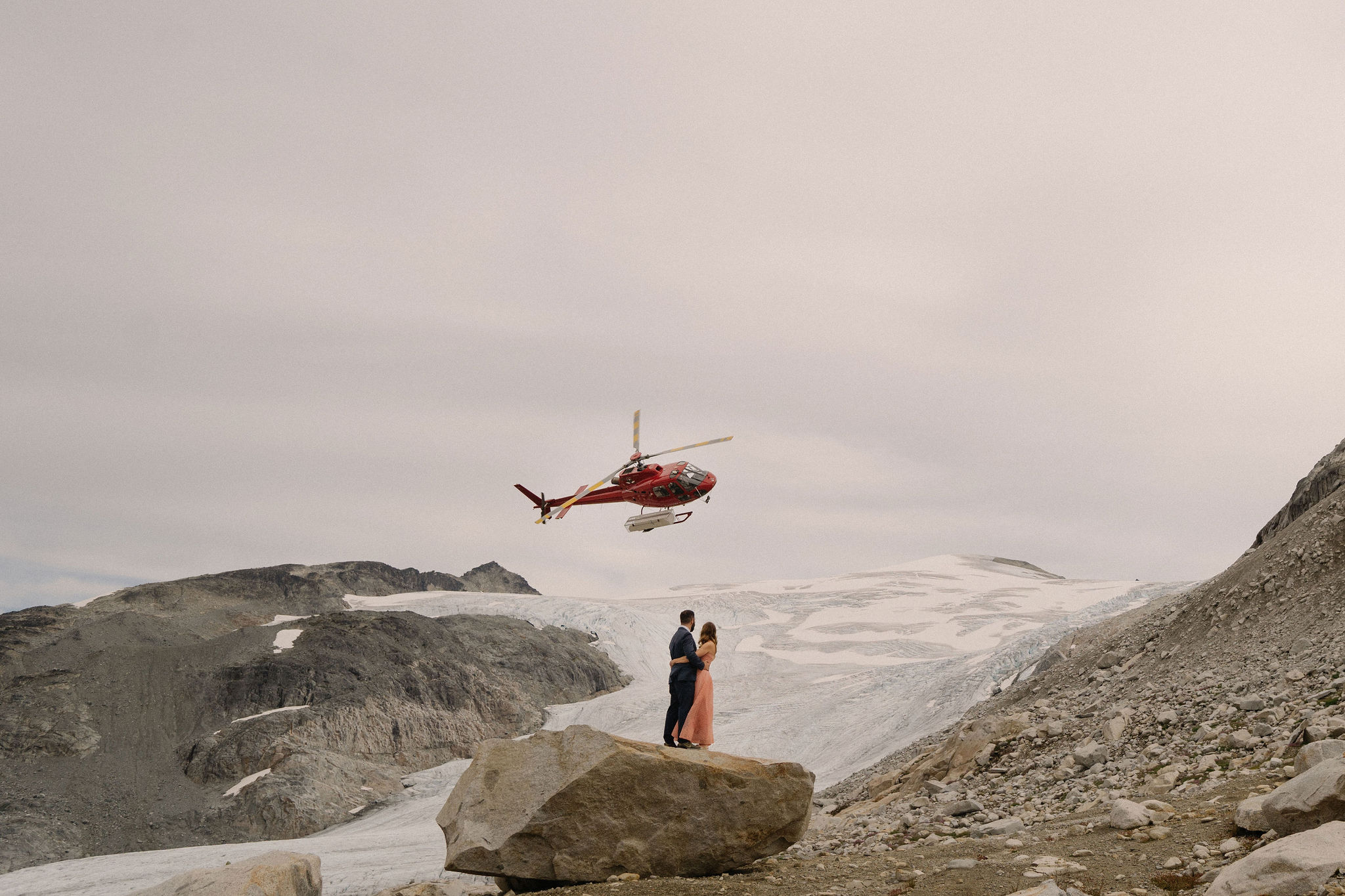
Travel on durable surfaces
The second principle of LNT is to travel (and camp) on durable surfaces. This is important so that you and your elopement wedding vendors stay safe. No one wants to start sliding off a cliff mid wedding vow!
Many of our outdoor elopements happen at easily accessible parks, beaches or valleys. But if you’re looking to go off the beaten path, make sure you’re keeping safety top of mind. For example, with our helicopter elopements, we always follow the advice of our experienced pilots and only go where they say we can safely venture.
Another big piece of surface safety is factoring in your footwear. While you might usually camp and trek in hiking boots or running shoes, you may be wearing different footwear for your wedding that could endanger you or your surroundings. If you’re planning to wear less secure footwear, look for a more easily accessible area (e.g. with a flat or paved path) or consider changing into your wedding shoes once you arrive.
Dispose of waste properly
Everything you pack in for your outdoor wedding needs to be packed out. Not only does this ensure the next visitors to that area will be able to use and appreciate it, but it also keeps the environment safe from unnatural debris.
After your wedding, the space should look exactly the same, or better, than how you found it. This means packing out all of the decor you brought in, like arches, chairs and flower vases. It also means ensuring any waste you created is fully removed and properly disposed of.
Wedding waste is a huge problem; so many wedding items are created and used for only one day. Cut back on this by saying no to single-use items and looking at alternatives, like renting or second-hand products. With an elopement, you’ll naturally cut down on wedding items anyway, which can help reduce waste.
And for any wedding waste you do create, make sure you’re getting rid of it properly. Research proper disposal methods and commit to reusing, recycling or composting as much as you can.
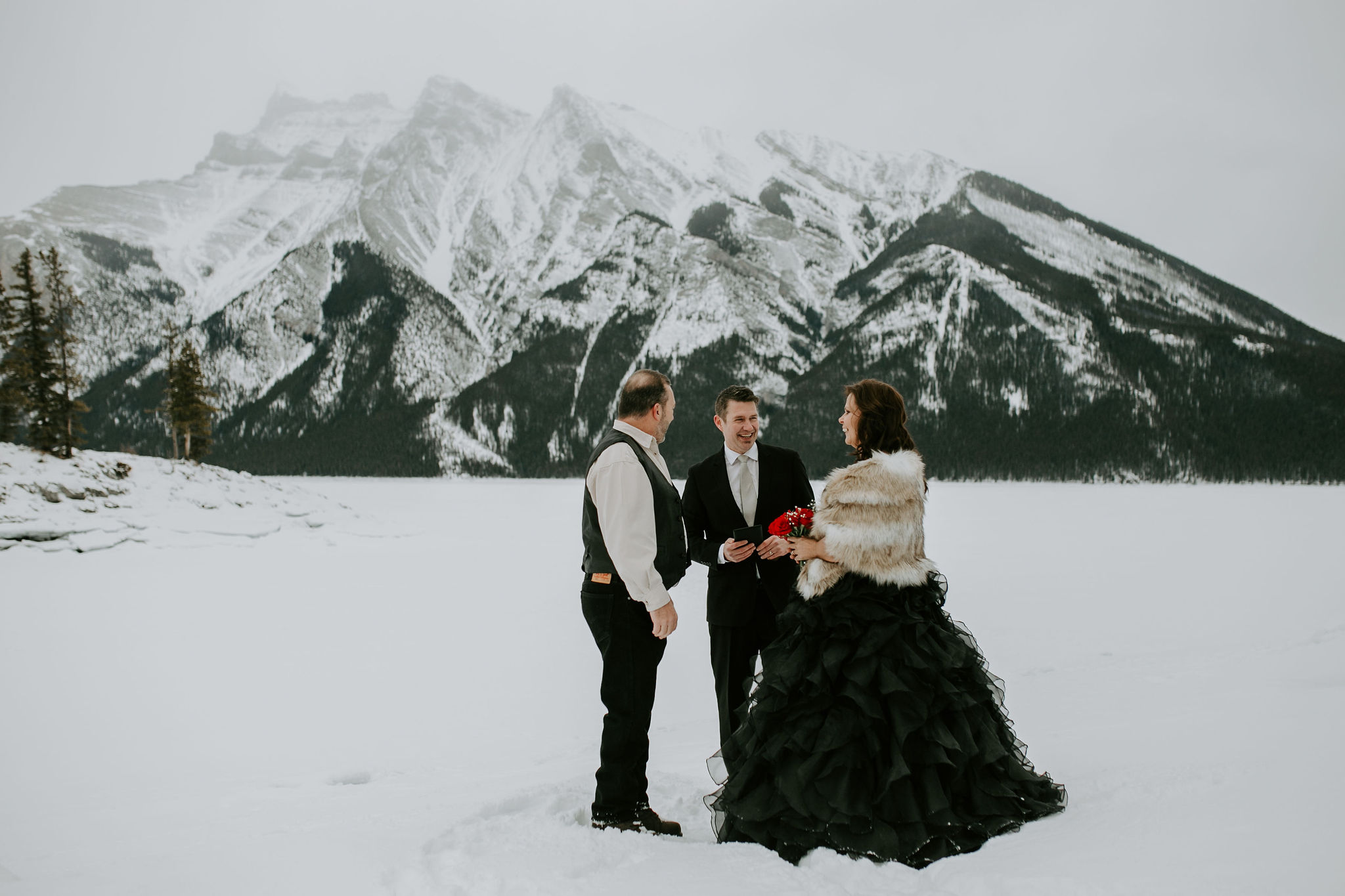
Leave what you find
As important as it is to pack out what you pack in, it’s just as important to only take out what you brought in. Everything you find in nature should remain there.
We understand that you may want to have a special token or marker of your outdoor elopement. You may have envisioned carving your names into a tree or taking a special rock home with you. But the principles of Leave No Trace encourage you to leave all of the natural elements you find exactly as they are.
While taking just one rock may not seem like a big deal, what happens if everyone does that? Suddenly, the landscape changes. Not only does this make a spot less enjoyable for future visitors, but it may make it less habitable for the wildlife that live and grow there. Plus, it may make the area unsafe if, for example, those rocks were used to hold soil together or block a water source.
So instead of taking a physical marker of your outdoor wedding, we hope you’ll take only photos and memories!
Respect wildlife
While it can be exciting to spot wildlife during your outdoor elopement, a wildlife spotting can quickly become dangerous if visitors are not respectful. In recent years, parks around Vancouver have had to deal with habituated bears and coyote attacks that ultimately ended in the closure of parks and deaths of the animals.
Respect wildlife by keeping a safe distance from any animals you spot and following all safety regulations in the area. Remember that while a bear in the back of your elopement photos might sound pretty cool, this is the bear’s home. Encroaching on the bear’s space or trying to lure them with food not only puts you in danger, but may endanger others and ultimately end in the bear’s death.
Remember too that wildlife extends beyond animals to plants and minerals. Respect what naturally grows in an area by staying on marked paths and keeping in mind previous principles to not remove or leave anything behind.
Bottom line: We have to share the great outdoors with all the wildlife that calls it home. Let’s show them some respect.
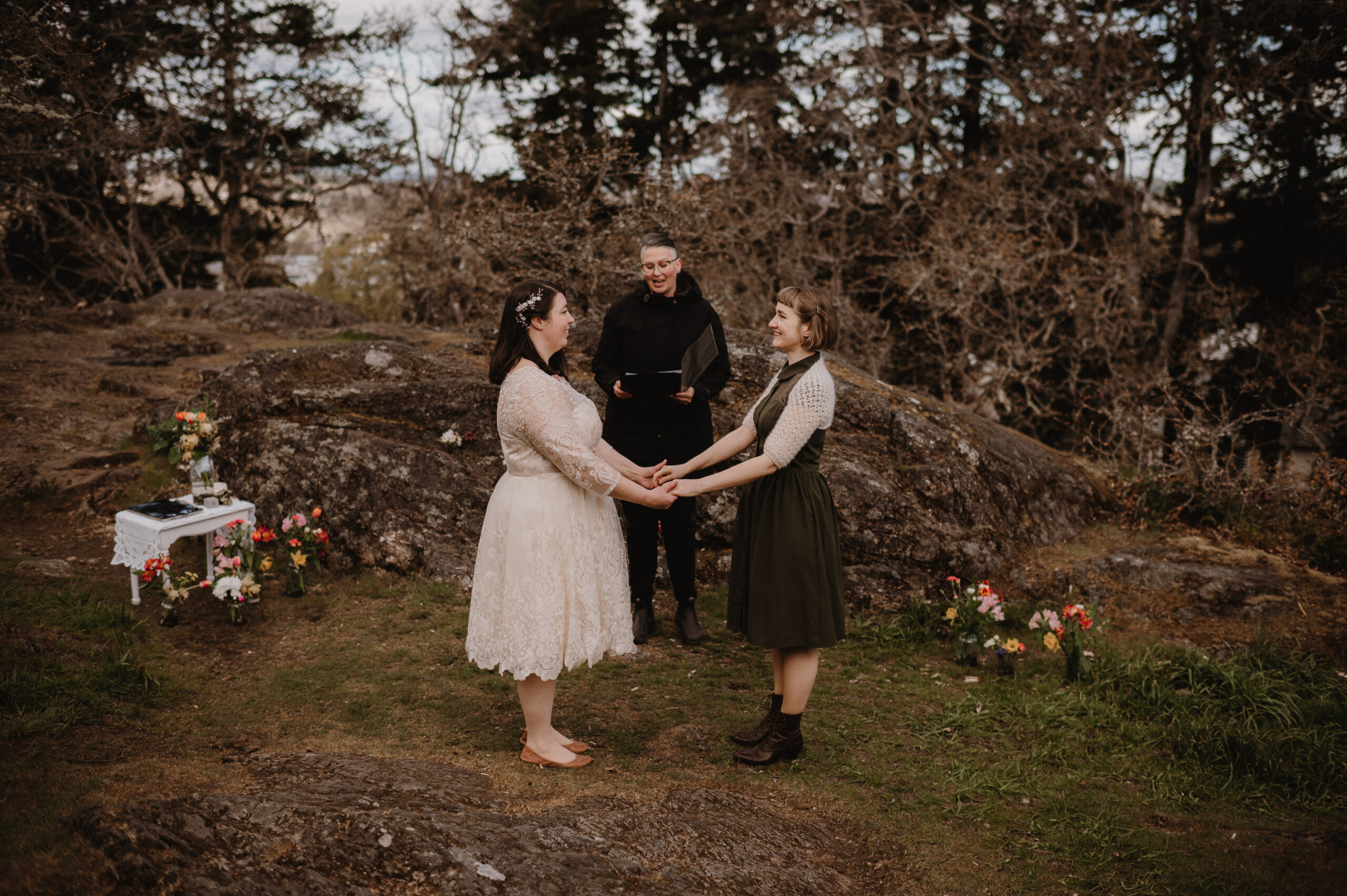
Be considerate of other visitors
Finally, you’ll want to keep other outdoor visitors in mind when planning your elopement. Especially if you are getting married in a public or shared space, it’s important to remember that everyone has a right to enjoy the area (even if it is your wedding day).
For couples interested in eloping outdoors at popular beaches or parks, we always recommend scheduling your elopement for an off-peak time. It’s a lot easier to find a quiet area on the Vancouver Seawall on a Monday morning than a Saturday afternoon.
We also recommend choosing areas slightly off the beaten path that don’t get as much foot traffic. This allows you to have a more intimate and private moment for your elopement while not bothering many other visitors.
Another way to be considerate of others is to leave your elopement area better than you found it so the next visitors can enjoy it as much as you did. Remove your waste and ensure nothing that you set up harms the environment or others’ enjoyment.
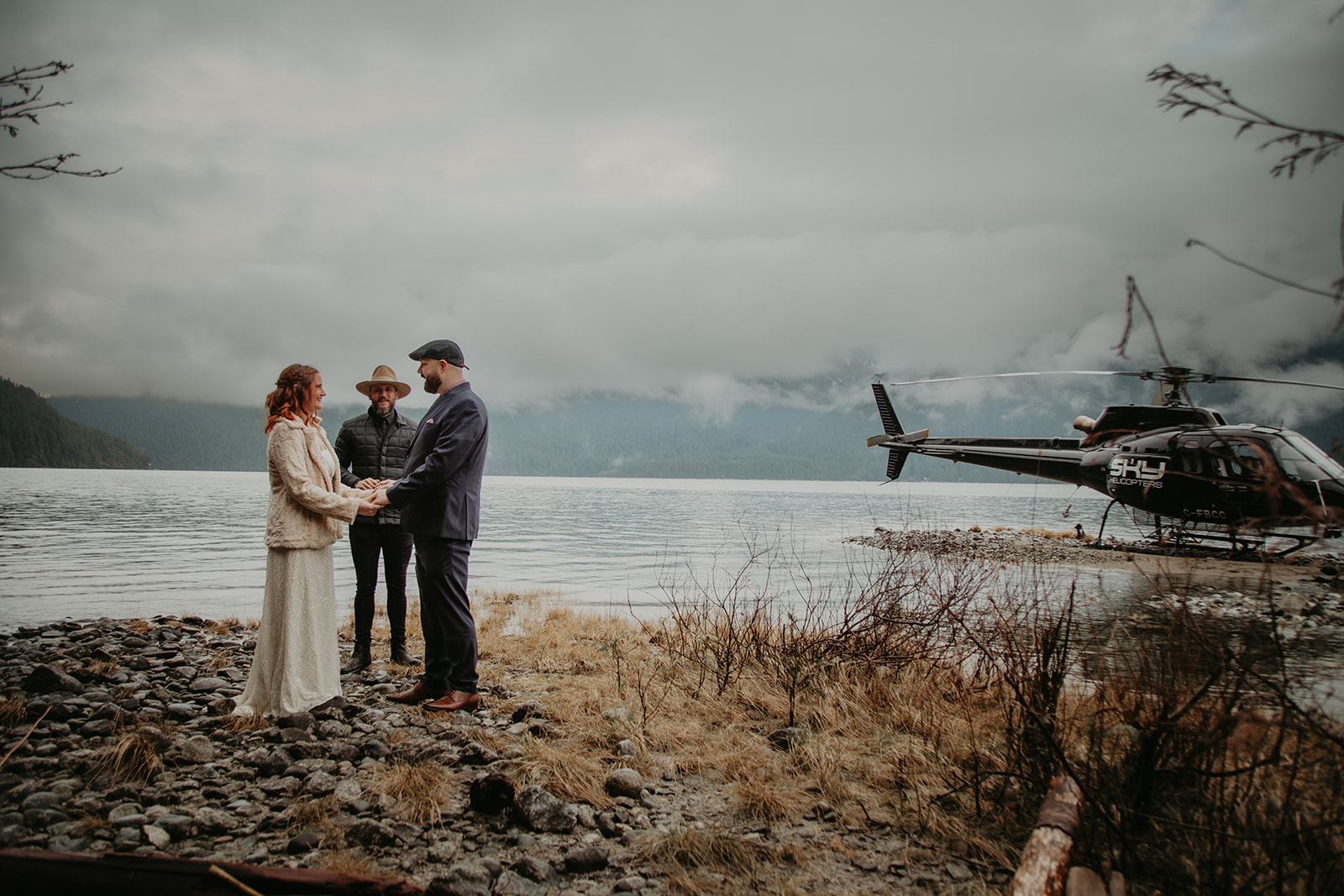
Want to do more to lessen the impact and increase the good of your outdoor elopement?
Want to do even more to lessen the environmental impact of your elopement and maybe even do some good with your nuptials? Amazing! Here are a few ideas to take your Leave No Trace philosophy to the next level:
- Learn about whose land you are getting married on. A great way to show respect for the place where you’re getting married is to learn about its history. Find out what Indigenous groups call your elopement location home and consider adding a land acknowledgement to your ceremony.
- Make a donation to an ecological organization. Increase the positive impact of your wedding by making a donation to an environmental cause of your choosing. You could also ask friends and family to make donations in your name in lieu of wedding gifts.
- Volunteer. Research local organizations and spend some time volunteering to benefit the environment. Whether you’re picking up waste from the beach or planting trees, you’ll feel an extra special connection to your outdoor elopement.
- Make the rest of your wedding eco-friendly. Don’t just stop at your elopement ceremony – you can make the rest of your wedding festivities low/zero waste too! You can send e-vites instead of paper invites, wear sustainable clothing, enjoy a locally sourced meal, and implement many more zero waste wedding ideas.
- Practice LNT principles every time you’re outdoors. The best way to increase the good of your outdoor elopement is to continue practicing the principles of Leave No Trace every time you go outdoors. Help sustain the environment around you wherever you are in the world!
Book your wedding officiant for your outdoor elopement today!
